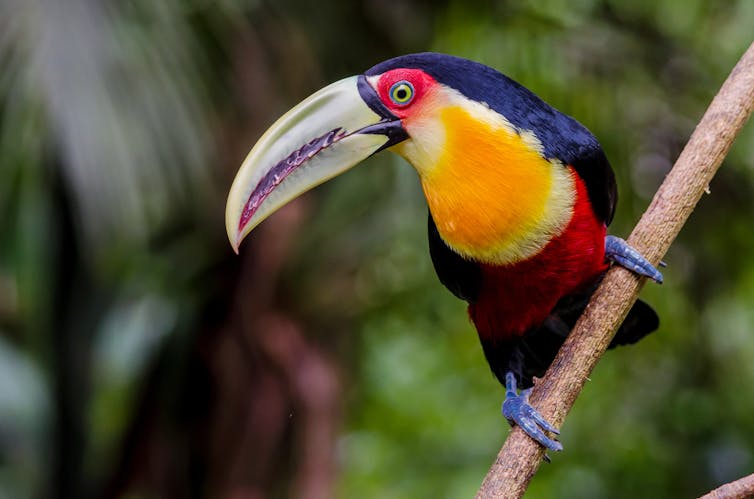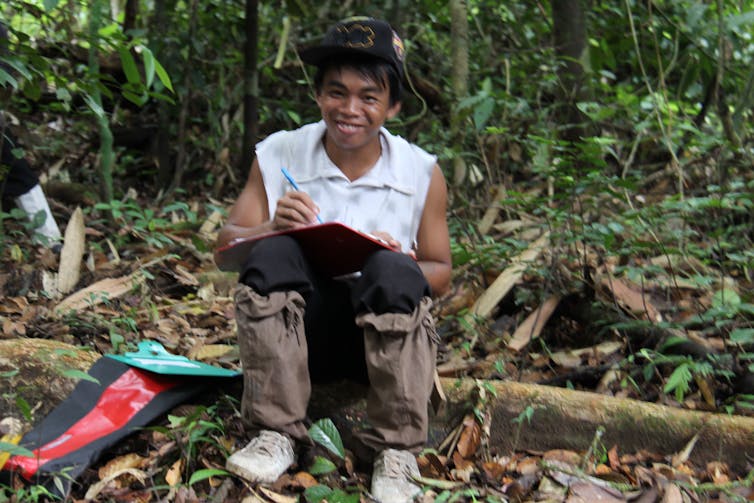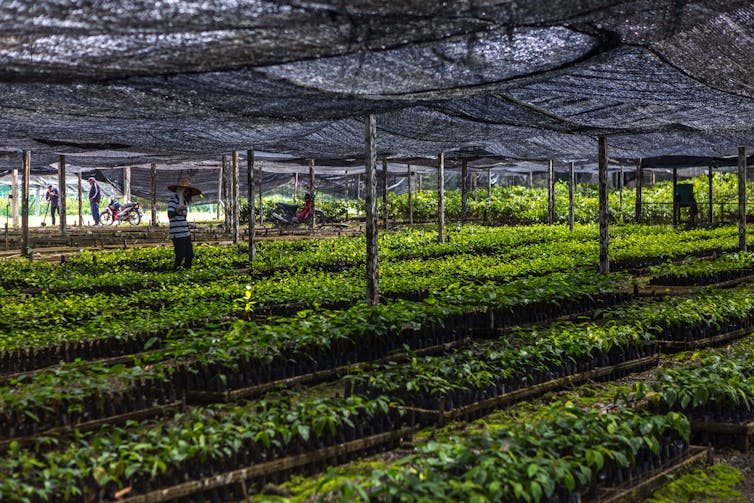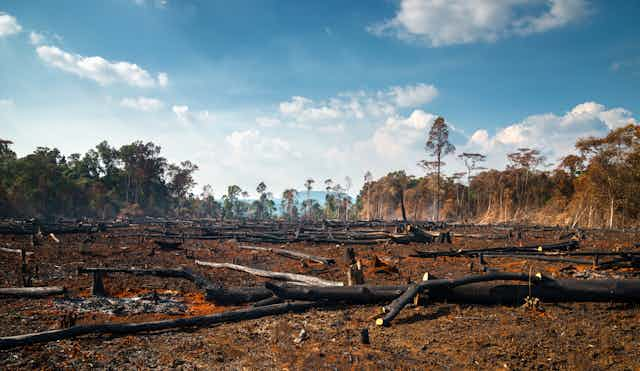The destruction of tropical forest is a major contributor to biodiversity loss and the climate crisis. In response, conservationists and scientists like us are debating how to best catalyse recovery of these forests. How do you take a patch of earth littered with tree stumps, or even a grassy pasture or palm oil plantation, and turn it back into a thriving forest filled with its original species?
Foresters have traditionally relied on planting trees, which seems obvious enough. Yet this approach has attracted criticism from some restoration ecologists, who argue that planting and caring for young trees is expensive and an inefficient use of scarce resources. They also point out that the carbon locked up in growing trees is quickly released into the atmosphere if plantations are harvested and used for short-lived wood products such as paper or cardboard.
There are even some well-documented case studies where tree planting has had negative outcomes. For instance, when forest cover was expanded on the Loess Plateau in China, soil erosion increased and there was less water available for people and agriculture. In Chile, subsidies for tree planting created a perverse incentive to plant trees instead of conserving natural forests. In the period between 2006 and 2011, the policy triggered a loss of natural forest cover and no net change in the amount of carbon stored in trees across the country.
Leave it to nature?
The alternative approach is referred to as natural regeneration. This generally means protecting the area you want to regrow, perhaps with fences or new legislation, and then letting the forest recover spontaneously through dormant seeds lying buried in soil or with seeds dispersed by wind or animals.
Natural regeneration has many advantages: it requires limited infrastructure or technical know-how and is often cheap to implement. There is also widespread evidence that natural regeneration has been effective at catalysing the recovery of forest biomass and biodiversity. It is tempting to view natural regeneration as a win-win solution for economic development and the environment.
But socio-ecological realities complicate this positive message. The critical first step is to secure the gains from any interventions, as both naturally regenerating and actively restored forest may continue to be degraded through over-harvesting if they are not protected. This requires the close participation of local communities and landowners in decision making, to ensure that the benefits and costs of forest restoration are distributed appropriately.
Natural regeneration often relies on animals to disperse the seeds. But in many tropical forests these animals, especially the larger birds and mammals that disperse the largest seeds, have been severely depleted by hunting. In the Atlantic forests of Brazil, trees with larger seeds have more dense wood, and loss of large seed-dispersing mammals and birds such as tapirs and toucans may result in recovering forests becoming dominated by light-wooded trees which store less carbon. In south-east Asian rainforests, the dominant trees have winged seeds that spin in the air over short distances, and therefore can’t recolonise sites more than a few tens of metres away from a seed source

Tropical forests often regenerate naturally on abandoned lands distant from the original, untouched forests. Yet if limitations on seed dispersal mean they lack the tree species that were originally dominant, then these young forests will store carbon less quickly and become home to fewer animal species.
A 20-year study
So how does natural regeneration match up against a more active approach? We recently published the results of a 20-year study that tried to address this question. After a tropical forest in Malaysia had been logged back in the 1980s and 1990s, our international team first measured how much carbon it still stored in its remaining trees. We then tracked carbon storage across two decades in areas that had been left to regenerate naturally, and adjacent patches that had been actively restored by tree planting and cutting back competitive weeds and climbers.

When we compared the two, we found that the actively restored forest was storing carbon 50% faster than the forest left to regenerate naturally. This finding was supported by measuring the size and number of trees on the ground and by laser scanning the forest from an aeroplane.
We don’t yet know how that increase was achieved. One possibility is that the planted trees filled the large gaps between the few large trees left by loggers, whereas equivalent patches in naturally regenerating forest were out of reach of natural seed dispersal. Greater spacing of young trees, combined with weeding out the competing vines and careful species selection, may have allowed them to grow faster and accumulate more carbon through time.

The restoration treatment was expensive, costing about US$1,500 (£1,080) per hectare of treated forest over the lifetime of the project. Some of this cost could be recovered through selling carbon credits (where polluters would pay for forest restoration to “offset” their own emissions), but covering the whole cost is unrealistic at current prices.
The high cost will inevitably limit the use of active restoration to the most disconnected or degraded sites where it is least likely that forests would regenerate naturally. Though we’ll have to rely on animals and wind to spread seeds in many settings, in other settings planting trees will be an ecological necessity we can’t afford to reject.

